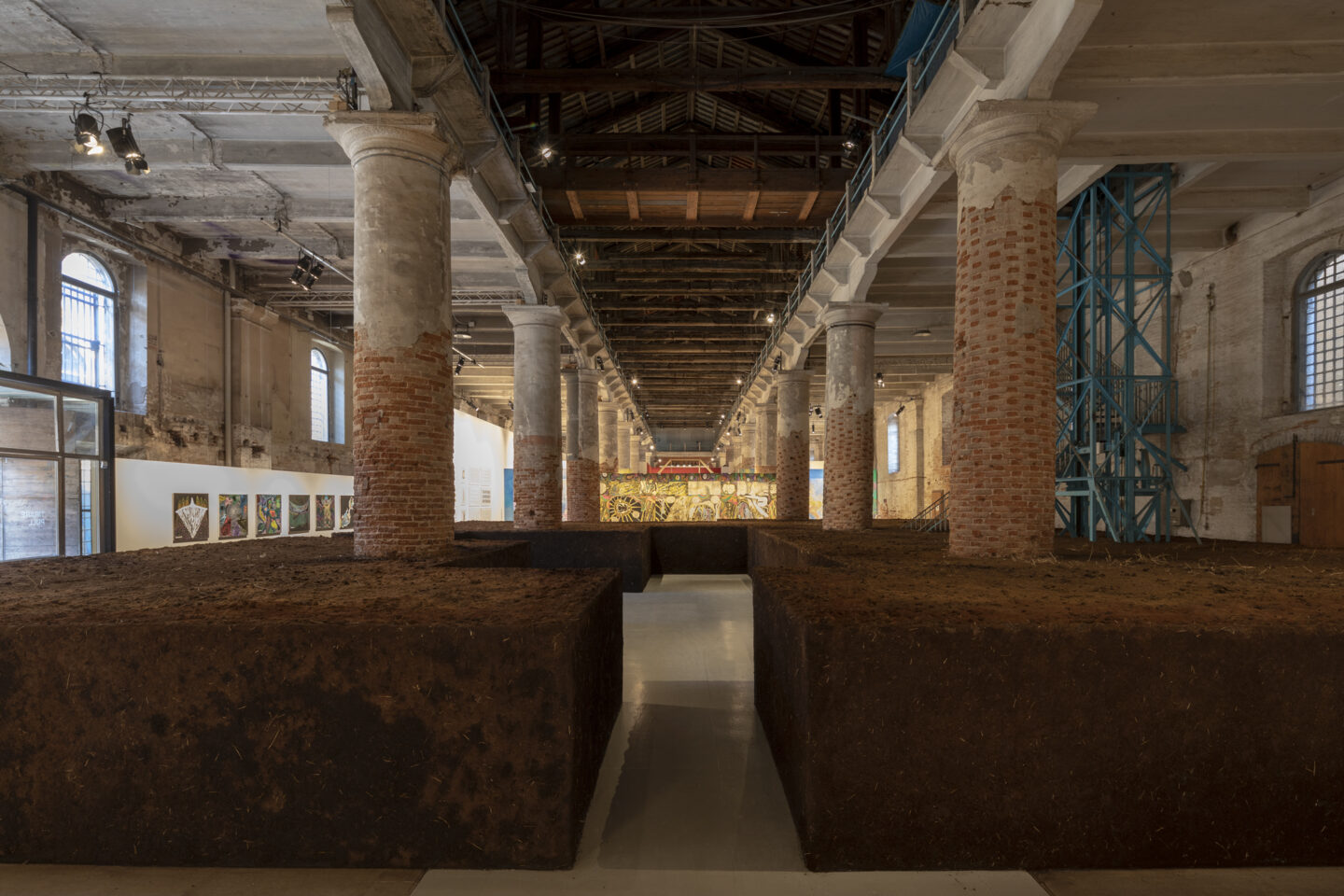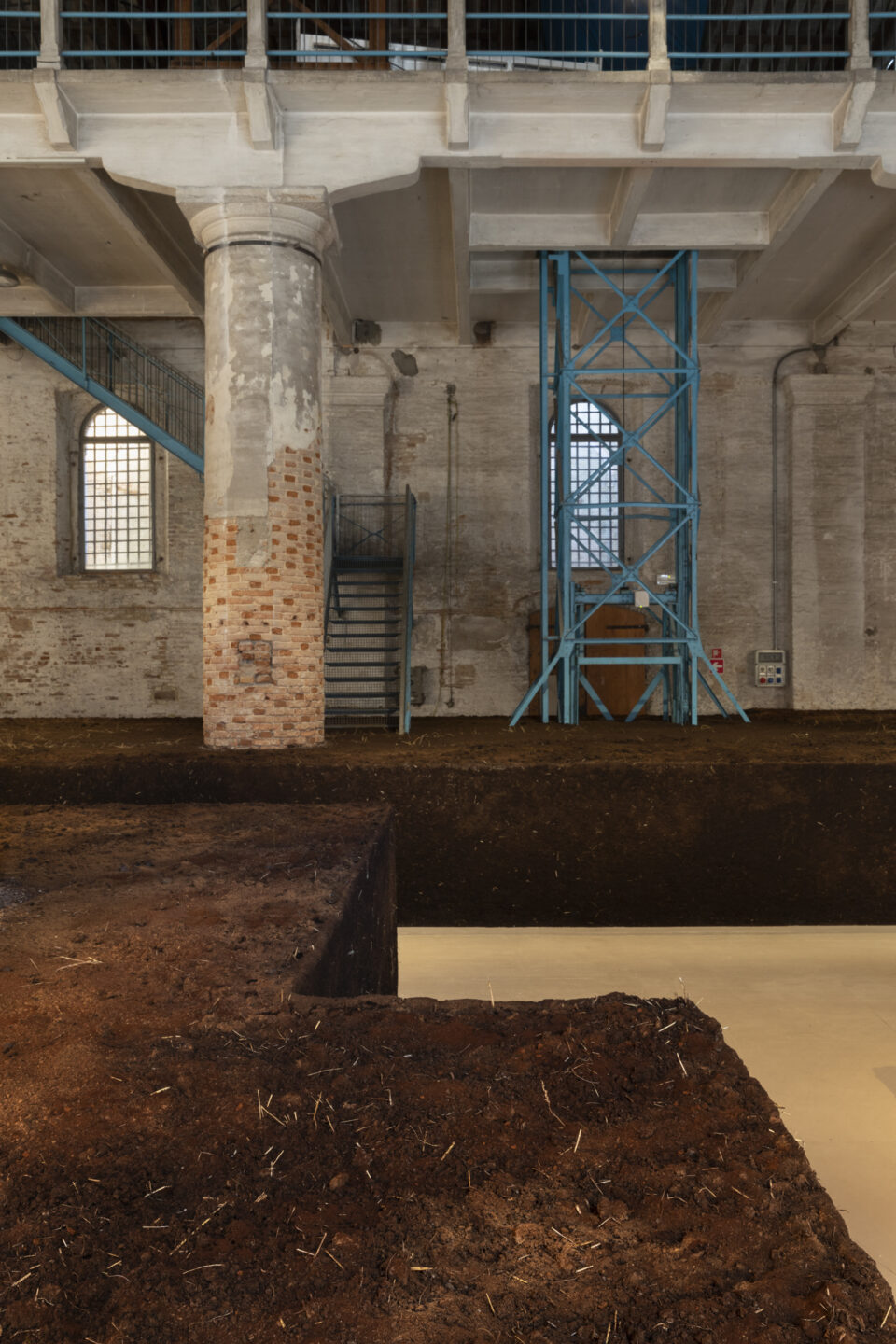Art is Essential in the Fight Against Climate Fatigue


For the first edition of our new essay series at Art Düsseldorf Magazine, we asked a selection of writers to investigate issues related to Sustainability in the Art World. This essay by Glesni Williams, a Bologna-based journalist, focuses on the rich history of environmental activism in art as a path forward in the fight against climate fatigue.
Edited by: Chris Erik Thomas, Digital Editor of Art Düsseldorf.
In an era where the impact of the climate crisis is omnipresent in the media, artists and art institutions are key to fighting climate fatigue. Artists have long been interested in the versatility and strength of nature, its ever-changing forms, and its exploitation; as people continue to build and use resources, they give less in return. What was once an art of observance — calling out the rights of the natural world, and incorporating natural elements within the artwork itself — has turned towards more dire warnings. Calls to action and the need for sustainability in art have become common. Art can inform and influence action without the pessimism seen on the news or social media. As more people become desensitized to the topic, the art world must demand more from their own institutions and break habits that contribute to a geological era characterized by unsustainable consumption.
Eco-philosopher Timothy Morton, the author of “All Art is Ecological” (2021), has coined the term “hyperobjects” to describe examples of the ubiquitous use of oil and plastic in the context of climate change. As Morton describes in their 2013 book, “Hyperobjects: Philosophy and Ecology After the End of the World,” a hyperobject is so overwhelmingly vast that it becomes impossible to comprehend its boundaries. A relentless torrent of data and images from natural disasters turned into clickbait contributes to a sense of hopelessness over the sheer size of the crisis. The result is a perfect storm for “climate fatigue,” or the state of mind wrought with anxiety and, often, desensitized to the overload of information.
Art can inform and influence action without the pessimism seen on the news or social media.
To find practical solutions for the future, one need only look back at the rich tradition of environmental activism in recent art history. Between 1978 and 1980, Canadian artist Betty Beaumont set the project “Ocean Landmark” in motion. The ambitious underwater installation transformed processed coal waste from a hydroelectric power plant into 17,000 blocks that were taken to sea and dropped onto the Atlantic Ocean floor. Decades later, the artist’s work paid off as nature took over. The recycled waste sculpture has become an abundant reef, contributing to the ocean’s ecosystem.
From the seabed to the sky above, artist Tomás Saraceno has made the power of the sun and wind currents the focal point of the Aerocene Foundation. Founded in 2015, the interdisciplinary artistic community seeks to “devise new modes of ecological sensitivity, reactivating a common imaginary towards an ethical collaboration with the atmosphere and the environment for a future free from borders and fossil fuels.” The scientifically-grounded aerosolar installations, inspired by solar energy advocate and inventor Dominic Michaelis’s 1970s research, hinge on the idea that the sun’s power is all that is needed to allow for aerosolar travel. Since creating the first Aerocene sculpture in 2006, his pieces have been exhibited in several institutions in recent years, including the Grand Palais during COP21 in 2015, Palais de Tokyo in 2018, Palazzo Strozzi in Florence in 2020, the Venice Biennale of Architecture in 2021, and the permanent installation “In Orbit” (2013) at K21 in Düsseldorf.
Another artist tapping into these themes is Nikola Uzunovski, whose work questions whether humans are capable of respecting natural resources — and what the future holds if they are not. With “My Sunshine,” a 2008 work shown as part of the Macedonian Pavilion at the 53rd Venice Biennale in 2009, the artist created multiple artificial suns. After several years of prototypes, Uzunovski’s suns were made from a transparent blimp with a rotating internal reflective disc that caught the sun’s rays. Uzunovski and Saraceno’s ongoing creative research demonstrates the possibility of moving away from non-renewable energy sources by creating light sources and air travel without burning fuels.

Delcy Morelos. "Earthly Paradise", 2022. Site-specific installation. Mixed media: soil, clay, cinnamon, powder cloves, cocoa powder, cassava starch, tobacco, copaiba, baking soda, and powdered charcoal. Dimensions variable. With the additional support of Ammodo. 59th International Art Exhibition – La Biennale di Venezia. Photo by Roberto Marossi.
Natural elements, such as soil and water, have also been incorporated into artists’ practice in ways that interrogate the exploitation of the earth. In Delcy Morelos’ “Earthly Paradise” (2022) at the 59th Venice Biennale 2022, the artist packed soil into thick, one-meter-tall walls for the immersive installation. With an aroma of hay, cacao powder, and other spices emanating from the earth, the piece became a multisensory experience. Surrounding visitors with these walls reminded them of their connection to the natural world, which should not be taken for granted. Morelos’ work recalls “The New York Earth Room” (1977) by Walter De Maria, a long-term installation of soil packed into a Soho gallery space, which has been on view to the public since 1980. An intersection of avant-garde art practice for the late 70s, De Maria strove to strengthen the relationship between the viewer and nature.
Using singular natural elements in installations can also be a means of approaching more existential subjects. In Olafur Eliasson and geologist Minik Rosing’s 2014 piece “Ice Watch,” twelve large blocks of ice arranged in a clock formation were installed in three public locations. Over time, the ice melted and disappeared completely. The piece was reminiscent of both Allan Kaprow’s “Fluids” (1967) and Francis Alÿs’s “Sometimes Making Something Leads to Nothing” (1997) — with one notable difference. The discourse surrounding ice in these early works was linked to its obsoleteness and had less to do with the urgency of the modern climate crisis, as in Eliasson’s work. His dedication to fighting climate change isn’t solely limited to his art. Since introducing a no-fly rule into new contracts, Eliasson’s studio has used trains or ship freights to transport works, with the aim of becoming carbon-neutral in the next decade. Eliasson demonstrates that the creator, not just the work, can bring practical contributions to fighting climate change.
In addition to individual artists, institutions also play a key role in addressing climate fatigue. One of the three locations for “Ice Watch” was at the Tate Modern on London’s Southbank. In 2019, Tate directors declared a climate emergency alongside the opening of Eliasson’s exhibition “In Real Life,” which included “The glacier melt series 1999/2019.” The museum pledged to “shine a spotlight on this critical issue” through actions across all four galleries. Part of the commitment to change came through their new environmental policy that promised to reduce carbon emissions by 50% by 2023 from the baseline year of 2007 and to work towards net zero emissions by 2030.
From large-scale installations made from natural elements to ambitious long-term projects that evolve over time to research-driven utopian sculptures, artists throughout art history and in the present day continue to highlight the conversation surrounding climate change and how we can move towards a greener society. The art world has the means to provide new communication and education about sustainability, renewable energy use, and safeguarding natural resources. Confronting the hyperobject of the climate crisis through the work of artists and exhibition space can spur conversation and make fighting the climate crisis feel more manageable. By providing a platform for artists to raise awareness, start a conversation, and involve the public in bringing about active social change, art can become an essential tool in breaking through the fog of climate fatigue.
Glesni Williams is an art journalist and translator from North Wales, based in Bologna, Italy. Her writing focuses on the evolution of contemporary art practice, the makers, and the interlinked exhibition spaces. She writes for Lampoon Magazine, Sound of Life, and smART Magazine, and is an arts contributor for BBC Radio Cymru.